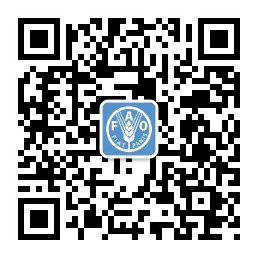 | Agricultural Information Management Standards (AIMS) Newsletter no. 3, July 2011 |
| If you have problems viewing this email then please click here | |
AIMS in Action | Monthly Spotlight | |||
AGRIS. Release of AGRIS 2.1.1 AMS. The Agricultural Ontology Services (AOS) Workshops now online AGROVOC. At the First meeting of the Collaborative Thesaurus Working Group CIARD Ring. Training Workshop on CIARD and Strengthening RAIS in the SAARC Countries VocBench. At SemTech 2011 More at Communities Upcoming Events Greece. HAICTA 2011 South Africa. ETD2011 The Netherlands. International UDC Seminar 2011 Kenya. 6th Annual IGF Meeting 2011 Australia. 6th International Conference on Digital Information Management The Netherlands. DC 2011 More at Events Service  | Linked Open Data. LODE Recommendations for Bibliographic Data The AIMS team has set its main goal for the last 10 years to enhance the information sharing and interoperability in the area of agricultural and rural development. This goal is based on the AGRIS experience, which FAO and its member countries started in the mid-70s. AGRIS was thought as a one-stop point to access publications in agricultural research, innovation and extension. At the beginning of the 80s a special thesaurus, AGROVOC , was developed to connect publications that were about identical or similar topics. With the advent of the Internet and its rapid development in the 90s, AGRIS partners became capable of publishing their metadata themselves. AIMS team developed the AGRIS application profile timely to give the AGRIS network the possibility to share data without being tied to any internal data standard. With the paradigm of Linked Open Data (LOD) and the emerging technologies in the 21st Century, it has become a general strategy to liberate data from their silos that are framed by proprietary database schemas. The LODE-BD (LOD-Enabled Bibliographic Data) Recommendations are our attempt to give guidance in the use of vocabularies for the production of bibliographical data (metadata on document-like objects and beyond). Our goal is to produce recommendations that are so flexible that some partners, who have no access to controlled vocabularies or LOD datasets, still can describe their data in a machine processable way, and join other partners who have access to a wide range of vocabularies and have huge capacities to provide quality metadata to the LOD universe. We are now publishing the LODE-BD version 1.1 that includes properties from namespaces of dc, dcterms, bibo, agls, ags, eprint and marcrel. This is based on the context of the VOA3R community. However, LODE-BD aims to be useable beyond the agriculture and VOA3R and to include more widely-adopted properties from other namespaces, after finishing a study of the usage of the properties in related bibliographic datasets. The next version, LODE-BD 1.2 is under development and will be released within 2011. Meanwhile, any comments and suggestions are welcome. | |||
News VocBench Biotechnology Glossary Training AGROVOC linked to 10 new datasets Preliminary results of the CIARD International Expert Consultation 2011 All OA-initiatives on a Worldmap More news at Of Interest 5 Questions in 5 Minutes with Diane Le Hénaff
Tell us something about yourself... what is your background and role in the organization you are working for? How did you get in contact with AIMS? What is your opinion on AIMS? According to you, what is the most important benefit that AIMS provides to the agricultural information management community? How do you think that information management standards can contribute to agricultural research for development? |
 | The scope of the AIMS Newsletter is to bring under the attention of the AIMS community recent news, events and achievements in the field of agricultural information management. If you have any contribution, suggestion, or need assistance with the newsletter, please contact us at [email protected] |
| You received this message because you are subscribed to the AIMS Newsletter | |


